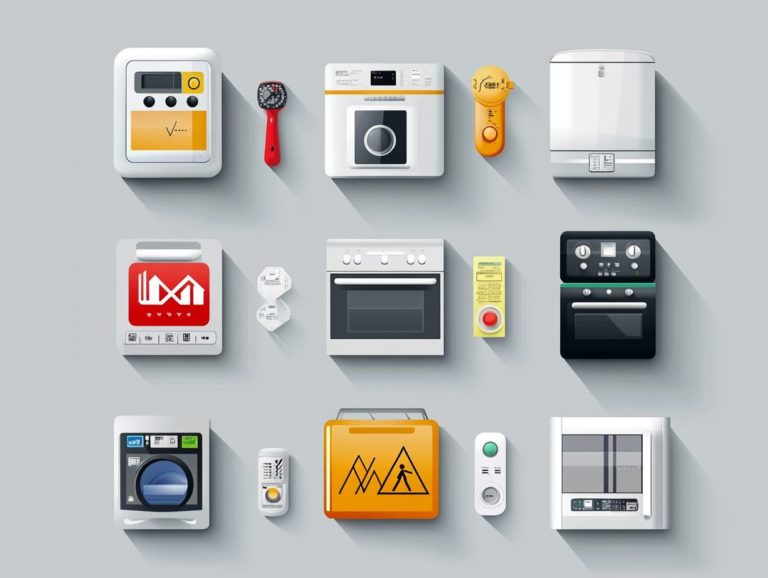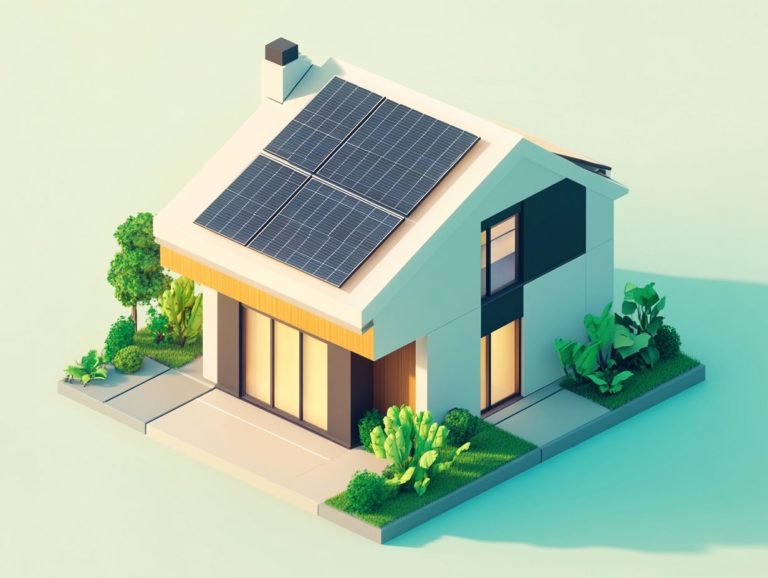How Do Smart Thermostats Save Energy?
Smart thermostats are transforming how you manage your home’s temperature, blending convenience with energy efficiency.
By using advanced sensors and data analysis, these devices learn your habits and preferences, optimizing heating and cooling for your comfort.
This article explores how smart thermostats function, highlighting their benefits like significant energy savings and enhanced comfort while outlining key factors to consider before installation.
You’ll find tips on maximizing energy efficiency and a sneak peek into the future of these innovative devices. Get ready to revolutionize how you control your home s climate!
Contents
Key Takeaways:
- Smart thermostats use sensors and data to help you save on your utility bills.
- They offer convenience and comfort while cutting energy costs.
- Before installing, check compatibility and costs to maximize efficiency.
What are Smart Thermostats?
Smart thermostats are advanced devices designed to improve energy efficiency by regulating heating and cooling systems in your home.
By optimizing energy consumption according to your preferences, devices like the Nest Thermostat and Ecobee offer an intuitive interface that gives you remote access and control.
This functionality allows you to maintain your desired comfort levels while cutting down on electric bills. Many of these smart thermostats work well with Energy Star certified HVAC systems, maximizing your savings and positively impacting the environment.
How Do Smart Thermostats Work?
Smart thermostats use sophisticated sensors and simple rules to monitor and adjust your home’s temperature, ensuring optimal comfort and energy efficiency.
These devices track your energy usage and learn from your preferences over time, connecting seamlessly with your existing HVAC systems via Wi-Fi.
With remote access through mobile apps, you can view real-time data and make adjustments with just a tap.
Sensors and Data Analysis
Smart thermostats use various sensors to monitor indoor temperature, humidity, and occupancy. This allows for precise data analysis that effectively tracks energy use and regulates temperature.
Beyond simple temperature sensors, these devices often include humidity sensors and motion detectors, giving you a thorough understanding of your home environment.
Remote sensors are particularly valuable, as they help measure conditions in multiple rooms, ensuring energy consumption is optimized throughout your entire space.
By analyzing data from these sensors, the thermostat can decide when to heat or cool specific areas, enhancing your comfort while reducing energy waste.
Benefits of Using Smart Thermostats
Using smart thermostats provides numerous benefits, from substantial energy savings to improved comfort. This translates to lower electric bills and a reduced environmental footprint.
These devices elevate your home comfort with customizable technology, allowing you to monitor your energy consumption. This insight helps you make informed decisions that lead to notable financial savings.
Don t miss out on these innovative devices discover how you can start saving energy today!
Energy and Cost Savings
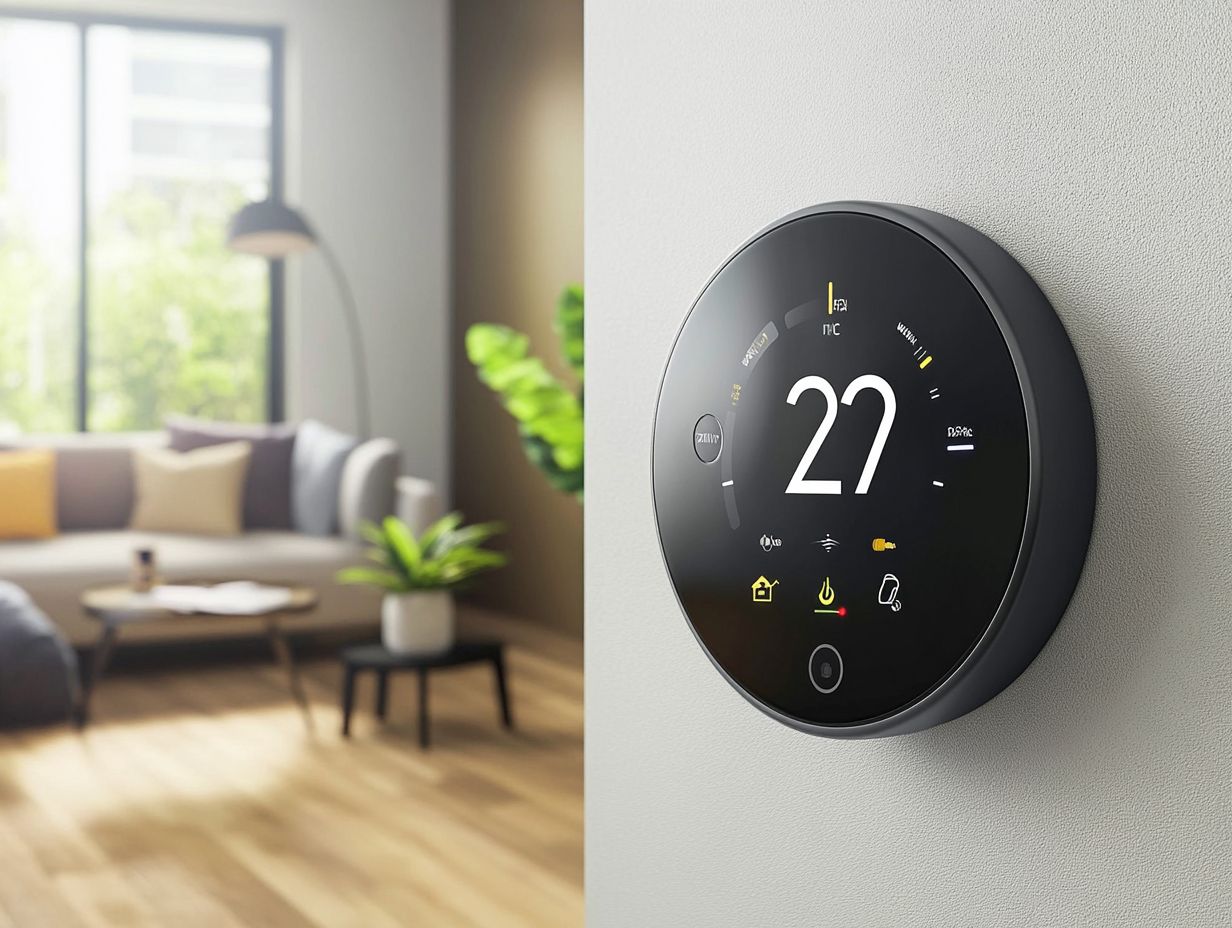
One of the primary advantages of smart thermostats lies in their remarkable ability to deliver significant energy and cost savings. By optimizing energy consumption through intelligent management of HVAC systems, you can slash your electric bills. Maintaining ideal temperature settings and employing energy-saving strategies can substantially reduce your energy expenditure.
These devices utilize cutting-edge features like geofencing (automatic temperature adjustment when you leave or return home). This feature senses when you leave or approach your home, adjusting the temperature to conserve energy when the house is empty. Smart scheduling (setting your heating and cooling based on your routine) enables you to tailor heating and cooling times to your schedule, elevating efficiency even further. Many users report up to a 30% reduction in energy costs after making the switch to smart thermostats: saving energy the smart way.
Consider the example of a family in California that enjoys yearly savings of approximately $200. This shows that using smart thermostats not only helps the planet but also boosts your savings!
Convenience and Comfort
Smart thermostats elevate your home experience, offering an intuitive display and an effortlessly navigable interface. You can control your heating and cooling systems from anywhere. Features like remote access and smart scheduling allow you to tailor settings to align perfectly with your daily routines and preferences, ensuring consistent comfort throughout the day.
The integration of voice control and mobile apps enhances your experience, allowing for seamless adjustments without the hassle of physical controls. You ll receive timely notifications about maintenance, such as filter changes or system check-ups. This keeps you informed and helps extend the lifespan of your system while ensuring it operates at peak performance.
By harnessing these advanced features, you can cultivate a living environment that is not only comfortable but also tailored to your unique needs. Ultimately, you can transform your lifestyle into one that prioritizes convenience and efficiency through smart home technology.
Factors to Consider Before Installing a Smart Thermostat
Before installing a smart thermostat, think about a few key factors. Consider compatibility with your existing HVAC systems, the installation process, and the overall cost.
These considerations ensure that the device aligns perfectly with your home technology needs. Taking the time to understand these aspects can greatly influence the effectiveness and efficiency of your new energy-saving investment.
Compatibility and Cost
Make sure your smart thermostat works with your HVAC system. This compatibility affects both performance and cost-effectiveness of your installation process. It’s important to grasp the associated costs since choosing the right model can yield substantial financial savings in the long run.
To assess compatibility, closely review your current system’s specifications and consult the compatibility guidelines provided by the thermostat manufacturer. Also, consider potential extra expenses. Professional installation may range from $100 to $300, depending on the complexity of your setup.
While the upfront investment might appear significant, the energy savings you’ll likely enjoy can offset these initial costs over time. Many smart thermostats are designed to optimize heating and cooling schedules. This helps you reduce energy consumption, lower your utility bills, and create a more sustainable home environment.
Start your journey to savings and comfort today by choosing the right smart thermostat for your home!
Installation and Maintenance
Installing a smart thermostat can be simple or complex. Hiring a professional can ensure everything works perfectly and integrates seamlessly with your existing home systems.
Regular maintenance is essential. Alerts for updates will help you maintain optimal performance and efficiency.
If you’re feeling adventurous, the DIY route can be rewarding! Just have some basic tools ready like a screwdriver, drill, and wire strippers. Start by turning off the power to your current thermostat. Carefully remove the unit and take note of the wiring configuration.
After mounting your new thermostat and connecting the wiring correctly, power it back on for calibration and Wi-Fi integration. Don’t forget to perform routine check-ups! Use built-in alerts to remind you of filter changes and system updates to keep everything functioning well.
Tips for Maximizing Energy Savings with Smart Thermostats
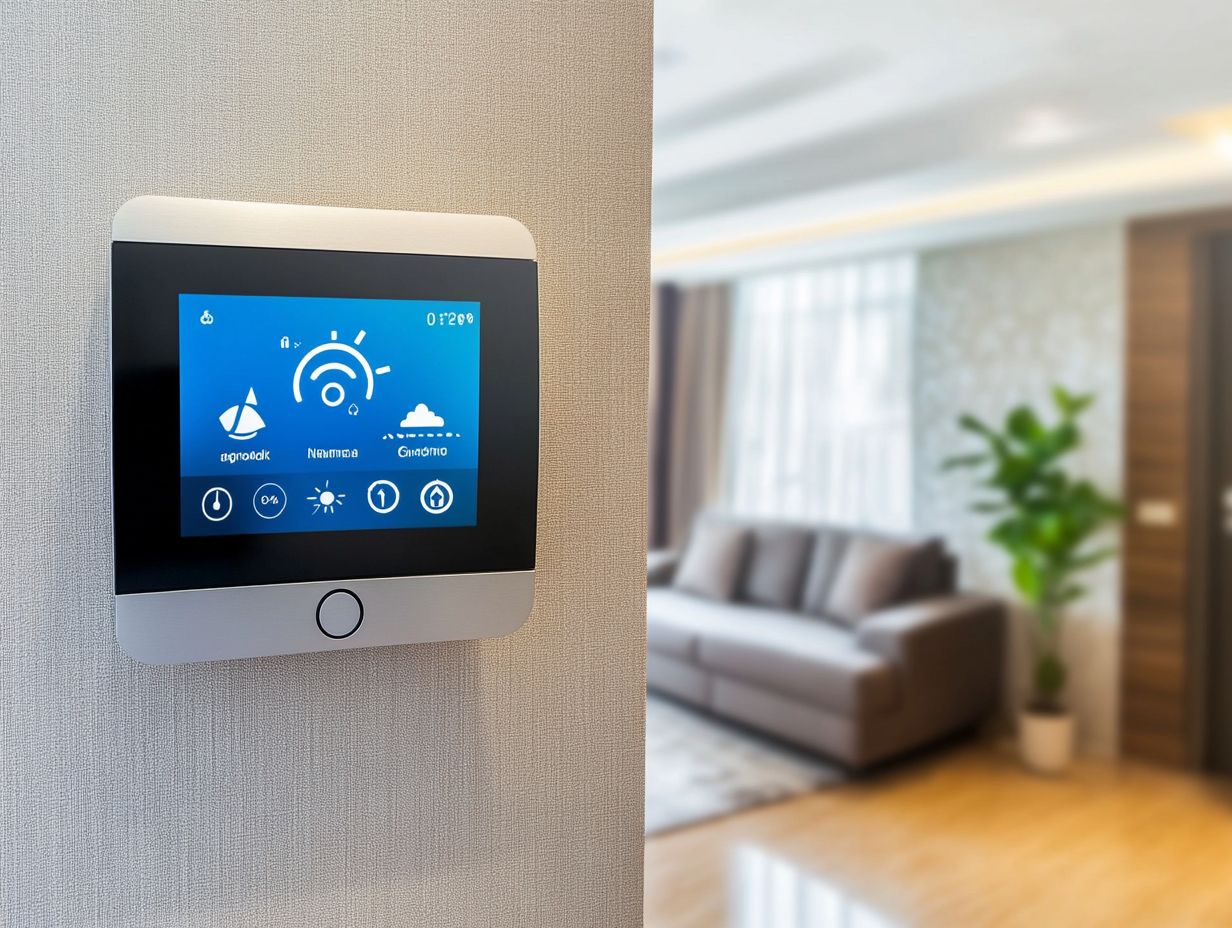
To maximize energy savings with smart thermostats, consider using smart scheduling and making regular programming adjustments. These strategies can significantly reduce your energy consumption. Analyze your energy usage data to fine-tune your devices for peak performance, ensuring comfort and efficiency.
Programming and Usage Strategies
Effective programming and strategic usage are crucial to harness the full potential of smart thermostats. This technology allows you to customize settings to match your daily routines.
For example, time-of-use scheduling helps you adjust heating and cooling based on peak hours. You can also use learning algorithms that adapt to your past behaviors, anticipating your future needs. If your household typically leaves for work at 8 AM, the thermostat can prepare your home just in time, showcasing the benefits of smart home automation for energy use.
Integrating motion sensors is another great idea, allowing the system to adjust settings when your house is empty. These techniques not only enhance comfort but also contribute to a more sustainable energy future.
The Future of Smart Thermostats and Energy Efficiency
The future of smart thermostats promises exciting advancements in energy efficiency, particularly their integration with IoT devices. This will create more automated and efficient home environments.
- Expect enhanced learning capabilities and real-time monitoring for optimal energy usage.
- Imagine your thermostat communicating with your security system and lighting for a seamless experience.
- Control adjustments through voice commands and mobile applications for an intuitive experience.
- Advancements in machine learning algorithms may allow predictions of your energy needs based on weather and routines.
- With a focus on sustainability, the future may include solar energy management options to better utilize renewable resources while reducing your carbon footprint.

Frequently Asked Questions
How Do Smart Thermostats Save Energy?
Smart thermostats save energy by using advanced technology to monitor and adjust your home’s temperature more efficiently.
What is the main feature of a smart thermostat that helps save energy?
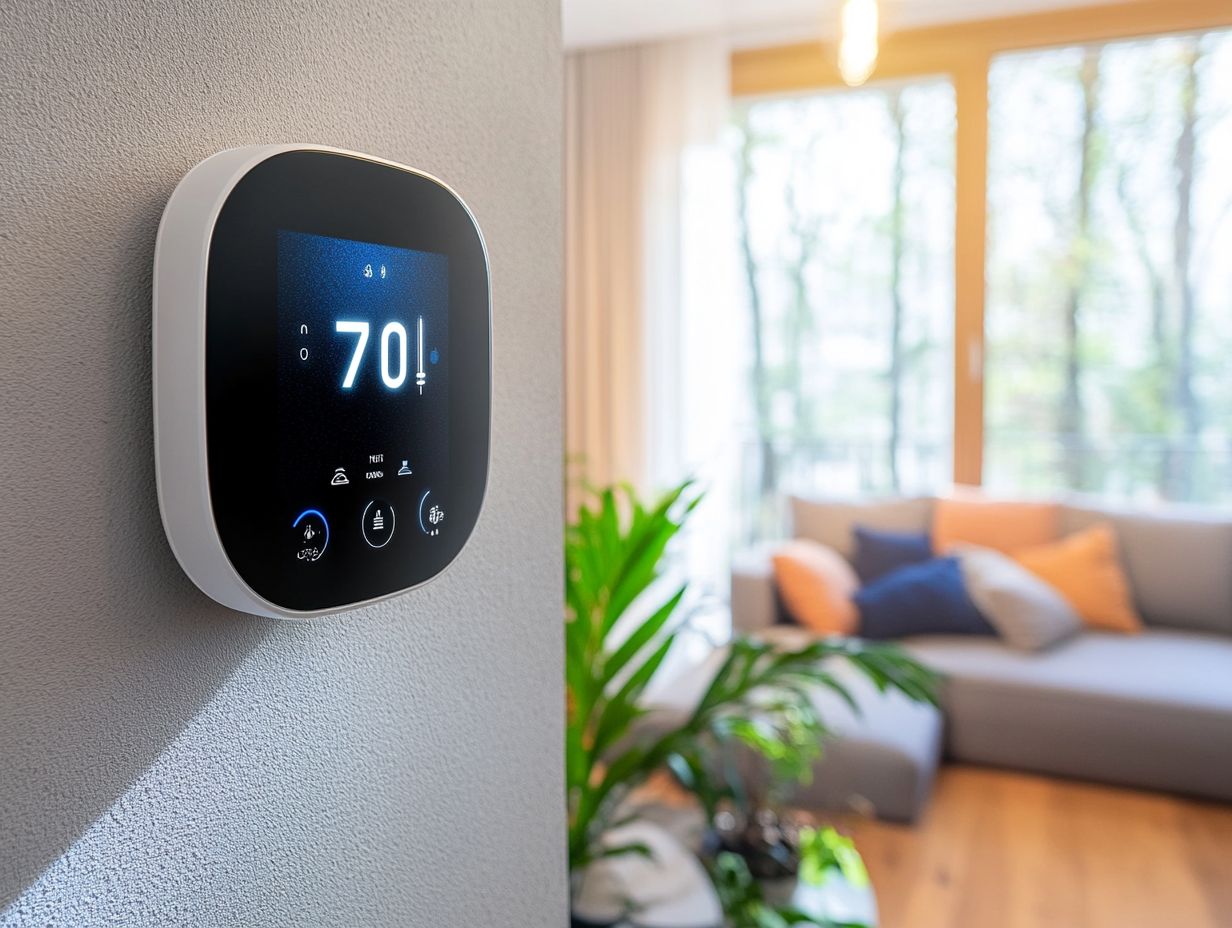
The main feature of a smart thermostat is its ability to learn your daily routine. It adjusts the temperature to match your needs, saving you energy.
How do smart thermostats learn my routine?
Smart thermostats track your habits using sensors and rules. They notice when you leave and return home to create a personalized heating and cooling schedule.
Do smart thermostats reduce energy costs?
Absolutely! Smart thermostats can slash your energy costs by adjusting the temperature based on your habits.
Can I control my smart thermostat remotely?
Yes! Most smart thermostats let you control them from a smartphone app, so you can adjust the temperature even when you re away.
Do smart thermostats work with all types of HVAC systems?
Most smart thermostats are compatible with various HVAC systems. Always check compatibility before buying to ensure it works with your system.



